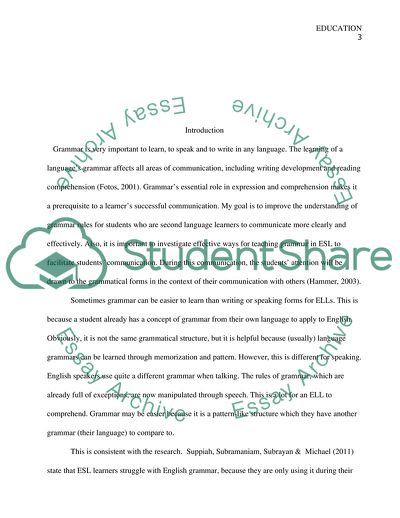Cite this document
(Teaching Grammar of English as a Second Language Research Proposal Example | Topics and Well Written Essays - 3250 words, n.d.)
Teaching Grammar of English as a Second Language Research Proposal Example | Topics and Well Written Essays - 3250 words. https://studentshare.org/english/1786731-mini-proposalteaching-grammar-as-a-second-language
Teaching Grammar of English as a Second Language Research Proposal Example | Topics and Well Written Essays - 3250 words. https://studentshare.org/english/1786731-mini-proposalteaching-grammar-as-a-second-language
(Teaching Grammar of English As a Second Language Research Proposal Example | Topics and Well Written Essays - 3250 Words)
Teaching Grammar of English As a Second Language Research Proposal Example | Topics and Well Written Essays - 3250 Words. https://studentshare.org/english/1786731-mini-proposalteaching-grammar-as-a-second-language.
Teaching Grammar of English As a Second Language Research Proposal Example | Topics and Well Written Essays - 3250 Words. https://studentshare.org/english/1786731-mini-proposalteaching-grammar-as-a-second-language.
“Teaching Grammar of English As a Second Language Research Proposal Example | Topics and Well Written Essays - 3250 Words”. https://studentshare.org/english/1786731-mini-proposalteaching-grammar-as-a-second-language.


